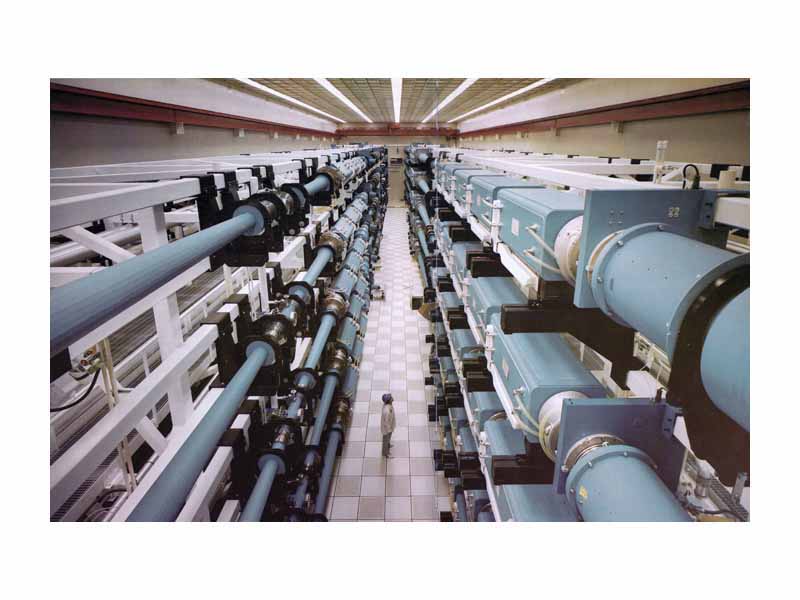Inertial confinement fusion using lasers rapidly progressed in the late 1970s and early 1980s from being able to deliver only a few joules of laser energy (per pulse) to a fusion target to being able to deliver tens of kilojoules to a target. At this point, incredibly large scientific devices were needed to continue to advance findings in experimentation. Here, a view of the space frame for the 10 beam LLNL Nova laser, shown shortly after the laser's completion in 1984. Laser fusion around the time of the construction of its predecessor, the Shiva laser, thus entered the realm of big science.
Click this LINK to visit the original image and attribution information. Right click on the image to save the 800px teaching JPEG.

